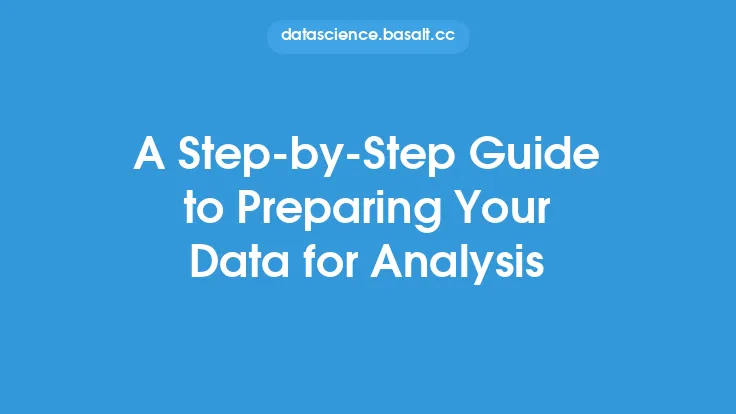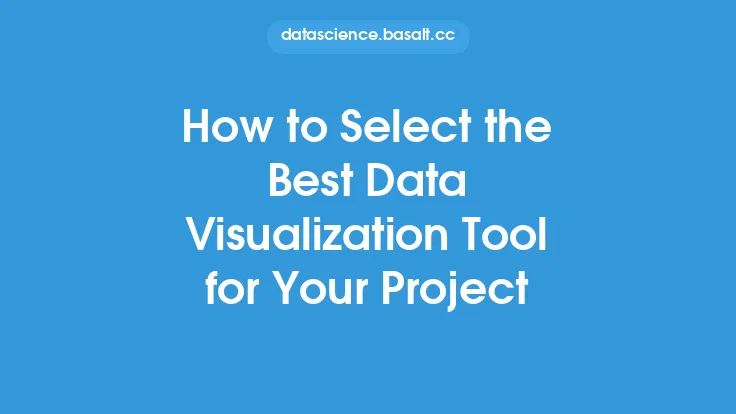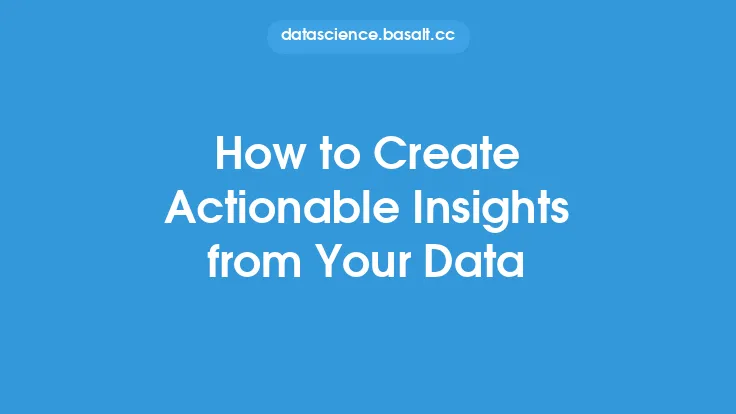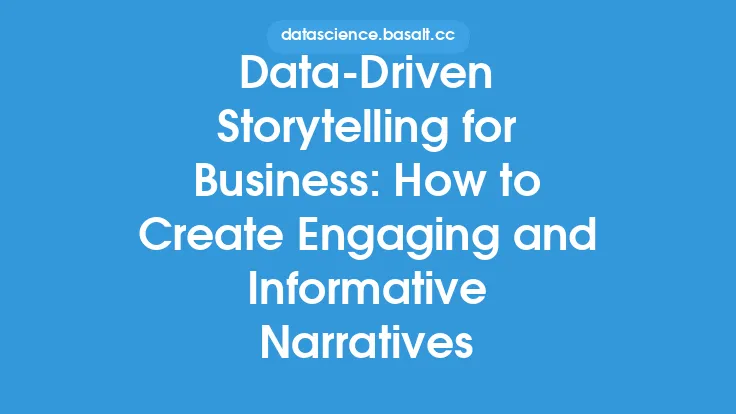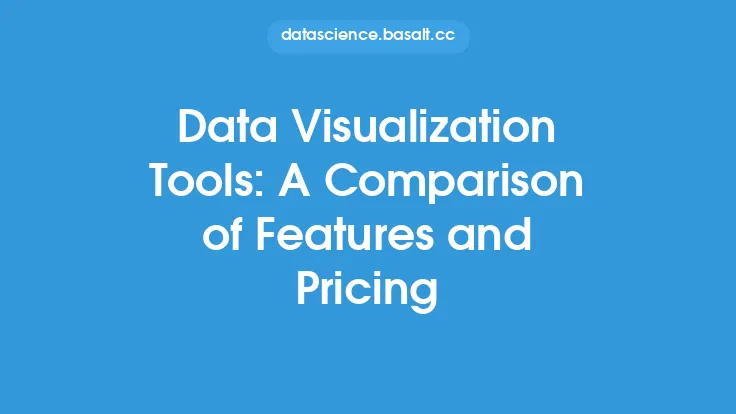Preparing your data for analysis and visualization is a crucial step in the data warehousing process. It involves transforming and formatting your data into a suitable structure for querying and analysis. This process is essential to ensure that your data is accurate, consistent, and easily accessible for analytics and business intelligence purposes. In this article, we will delve into the details of preparing your data for analysis and visualization, exploring the key concepts, techniques, and best practices involved.
Understanding Data Preparation
Data preparation is the process of cleaning, transforming, and formatting your data to make it suitable for analysis and visualization. This step is critical in ensuring that your data is accurate, complete, and consistent, which is essential for making informed business decisions. Data preparation involves a range of activities, including data cleaning, data transformation, data aggregation, and data formatting. The goal of data preparation is to create a unified view of your data that can be easily queried and analyzed.
Data Cleaning and Quality
Data cleaning and quality are essential aspects of data preparation. Data cleaning involves identifying and correcting errors, inconsistencies, and inaccuracies in your data. This can include handling missing values, removing duplicates, and correcting data entry errors. Data quality, on the other hand, refers to the accuracy, completeness, and consistency of your data. Ensuring high data quality is critical to prevent errors and inaccuracies in your analysis and visualization. Techniques such as data profiling, data validation, and data certification can be used to ensure high data quality.
Data Transformation and Aggregation
Data transformation and aggregation are critical steps in preparing your data for analysis and visualization. Data transformation involves converting your data from one format to another, such as converting date fields from string to date format. Data aggregation, on the other hand, involves combining multiple data fields into a single field, such as calculating the total sales for a region. Techniques such as data mapping, data pivoting, and data grouping can be used to transform and aggregate your data.
Data Formatting and Standardization
Data formatting and standardization are essential to ensure that your data is consistent and easily accessible for analysis and visualization. Data formatting involves converting your data into a suitable format for analysis, such as converting data from a CSV file to a relational database. Data standardization, on the other hand, involves ensuring that your data conforms to a standard format, such as using a standard date format or a standard set of codes for categorizing data. Techniques such as data type conversion, data formatting, and data normalization can be used to format and standardize your data.
Data Storage and Management
Data storage and management are critical aspects of preparing your data for analysis and visualization. Data storage involves storing your data in a suitable repository, such as a relational database or a data warehouse. Data management, on the other hand, involves ensuring that your data is secure, backed up, and easily accessible for analysis and visualization. Techniques such as data partitioning, data indexing, and data caching can be used to optimize data storage and management.
Data Governance and Security
Data governance and security are essential aspects of preparing your data for analysis and visualization. Data governance involves ensuring that your data is accurate, complete, and consistent, and that it conforms to organizational policies and procedures. Data security, on the other hand, involves ensuring that your data is protected from unauthorized access, theft, or damage. Techniques such as data encryption, data access control, and data auditing can be used to ensure data governance and security.
Best Practices for Data Preparation
Best practices for data preparation involve following a structured approach to preparing your data for analysis and visualization. This includes defining clear goals and objectives, identifying and prioritizing data sources, and using standardized tools and techniques for data preparation. Additionally, best practices involve ensuring data quality, security, and governance, and using data visualization and analytics tools to validate and refine your data preparation process.
Tools and Technologies for Data Preparation
A range of tools and technologies are available for data preparation, including data integration tools, data transformation tools, and data visualization tools. Data integration tools, such as ETL (Extract, Transform, Load) tools, can be used to extract data from multiple sources, transform it into a suitable format, and load it into a target system. Data transformation tools, such as data mapping and data pivoting tools, can be used to transform and aggregate your data. Data visualization tools, such as business intelligence and analytics tools, can be used to validate and refine your data preparation process.
Conclusion
Preparing your data for analysis and visualization is a critical step in the data warehousing process. It involves transforming and formatting your data into a suitable structure for querying and analysis. By following best practices and using standardized tools and techniques, you can ensure that your data is accurate, complete, and consistent, and that it conforms to organizational policies and procedures. Additionally, by using data visualization and analytics tools, you can validate and refine your data preparation process, and ensure that your data is easily accessible for analysis and visualization.
